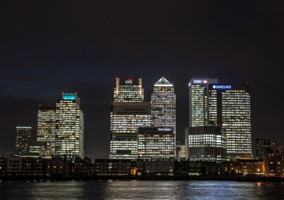The global economy is waking up from its medically induced coma as lockdown measures are eased, but how quickly will the world recover from the coronavirus pandemic? With high levels of unemployment, ongoing social distancing measures and the risk of a second wave, what will your charity portfolios look like over the coming months?
What may seem surprising is that by the end of June, global stock markets were almost back to the record highs seen at the beginning of 2020. In an environment of such uncertainty, are investors being overly optimistic? Equity markets typically anticipate turning points in the economy by three to six months, so if this recession only lasts two months (March and April), then the recent moves in stock markets make sense. But we don’t know that for sure. We don’t think the recovery is likely to be as smooth as the equity markets seem to be anticipating.
Markets have been supported by the extraordinary stimulus from central banks and governments, which has been impressive in its speed, scale and scope. This is important because the greatest historical failures to recover from a major economic shock were characterised by a lack of such action; for example, in the Great Depression of the late 1920s and Japan’s prolonged deflationary bust that began in the early 1990s.
Yet the stimulus can only do so much, and it’s likely that second-quarter UK GDP will contract by the most since at least 1946. The Office for National Statistics estimates that UK output fell by 26% in March and April, before climbing 2% in May. Where we go from here is subject to huge uncertainty. In our most optimistic scenario, we don’t expect the level of output seen in February 2020 to return until September 2021.
If there’s a second wave and just one more month of lockdown, much of the economy’s lost output could become permanent. The good news is that coronaviruses appear to be less susceptible to second or third waves compared with influenza outbreaks, because coronaviruses mutate to a lesser extent.
Yet even without a second wave, it may take some time for business to spring back. The International Monetary Fund estimates that the UK economy will contract by 10% in 2020, more than advanced economies in aggregate, before rebounding by about 6% next year. But even in a pessimistic scenario, it seems unlikely that recession would continue for 19 months, as it did in the US between 2007 and 2009 amid the global financial crisis.
The Bank of England and Office for Budget Responsibility, the Treasury watchdog, have released some of the gloomiest forecasts. They believe unemployment will stay much higher for longer, and households will save a much higher proportion of income and profits than normal. We’re not convinced such bearishness is warranted, but we agree that the economy is unlikely to be derailed by high inflation, which would cause authorities to rein in stimulus.
Inflation is only a risk if there’s a V-shaped recovery, and even then, it’s far from certain. The history of pandemics suggests they affect demand for goods and services more than they affect the ability to supply them. Less demand relative to supply is disinflationary. Most advanced economies have struggled to get inflation above the 2% inflation target over the last decade despite printing more money. That’s because a large increase in the supply of money doesn’t necessarily lead to inflation — there could be other obstacles affecting how quickly the money is spent.
The other big risk to the economic outlook is that unemployment will stay higher for longer. UK unemployment data is published with a lag, but we know from the data on universal credit and other benefits claims that the headline unemployment rate is likely to be around 8%. While the furlough scheme has helped curb unemployment, there’s a chance that firms may have no choice but to dismiss staff when the support schemes are withdrawn.
Risk is not a certainty. We think investors should remain broadly invested with defensives in place to guard against uncertainty. Equity valuations fell a long way, but they’ve risen a long way too. We believe there are still returns to be made over the long run and it’s important to remember that markets rarely stay down for long, even in years with huge drawdowns, such as 1976, 1987 or 1998.
Andrew Pitt, head of charities at Rathbones, London.
Related articles












